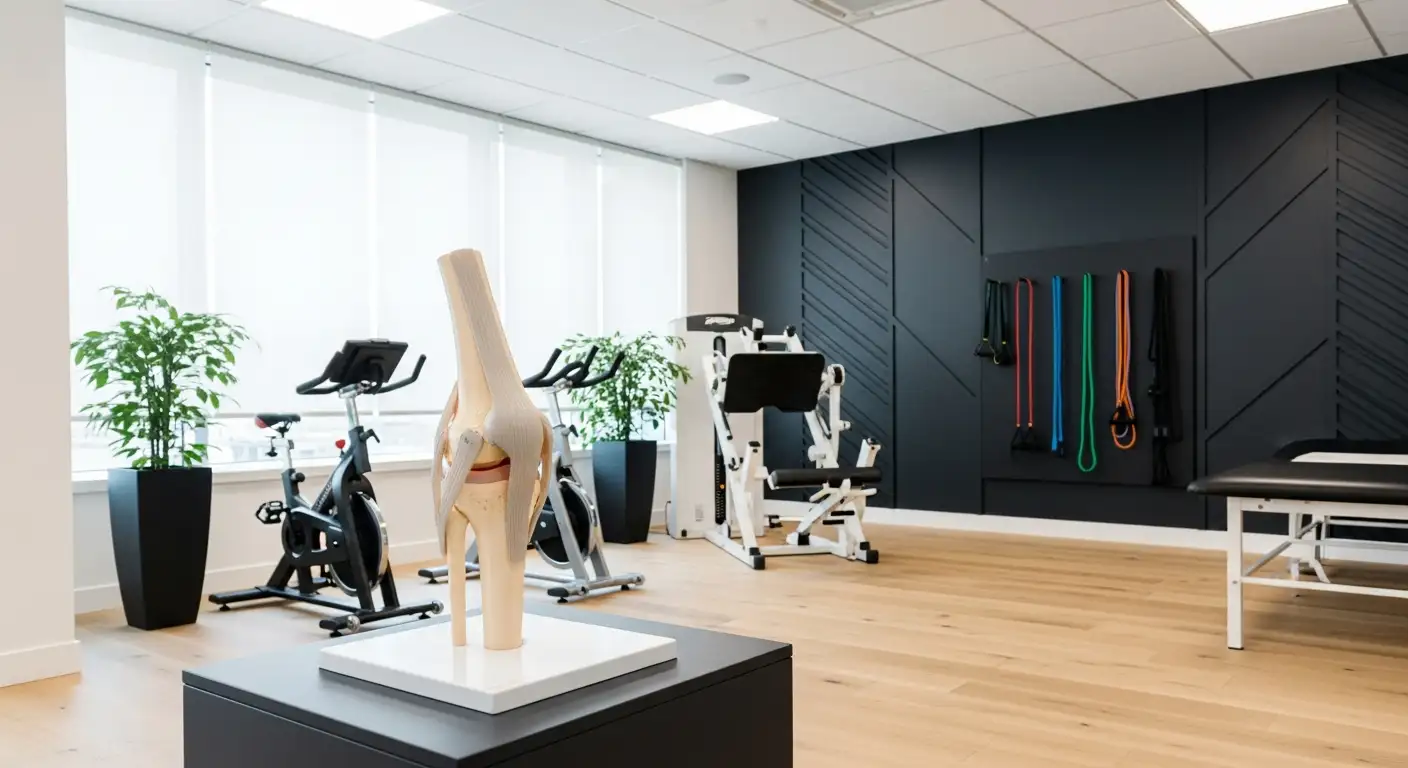Understanding Knee Surgery Recovery
Recovering from knee surgery is a process that requires time, patience, and adherence to certain guidelines for optimal outcomes. A major part of patients' recovery revolves around understanding why no pillow should be placed under the knee after surgery.
Knee Surgery: What to Expect
Knee surgery, whether it is a total knee replacement or arthroscopic surgery, aims to improve the knee's function and alleviate pain. However, post-surgery, patients need to adhere to specific guidelines to facilitate their recovery and prevent complications. One such guideline is not placing a pillow under the knee, as it can cause hyperextension and strain on the lower back and pelvis, potentially leading to further complications.

Maintaining proper posture during sitting, sleeping, and standing is crucial for the healing process. It is also recommended to elevate the leg at the ankle level instead of the knee level to reduce swelling and promote better circulation. The knee should be kept straight or use a special knee positioning device to maintain proper alignment and prevent complications [2].
Post-Surgery Complications
Despite the benefits of knee surgery, it's not without potential complications. Among these, improper knee positioning, such as placing a pillow under the knee, can lead to a lack of movement and stiffness, hindering the recovery process. It can also cause a flexion contracture, leading to permanent limited motion of the knee [2].
Patients undergoing joint surgery, including knee surgery, are at risk of developing blood clots. Preventive measures such as using compression boots, prescribing blood-thinning medications like warfarin or aspirin, and monitoring for warning signs of blood clots are employed post-surgery [4].
Additionally, it's essential to adhere to incision care guidelines, including keeping the dressing clean and not removing it until the two-week appointment. If the dressing loosens, it should be covered before showering [4].
Understanding these aspects of knee surgery recovery can help patients navigate their postoperative journey more confidently and avoid common pitfalls such as placing a pillow under the knee. This knowledge can help them stay on track towards a smoother recovery and improved mobility.
Importance of Knee Positioning
In the recovery phase after knee surgery, how the knee is positioned plays a critical role in healing and regaining function. Understanding the potential risks of improper knee positioning and the tips for maintaining correct alignment can help speed up recovery and prevent complications.
Risks of Improper Knee Positioning
One common but not recommended practice after surgery is to place a pillow under the knees. Doing so can cause hyperextension, placing strain on the lower back and pelvis, and leading to further complications post-surgery PubMed.
Additionally, placing a pillow under the knee can lead to a lack of movement and stiffness in the knee, which hinders the recovery process after knee replacement surgery Practice Plus Group.
Furthermore, this position can cause a flexion contracture, leading to permanent limited motion of the knee Hip & Knee Orthopaedic Surgeons.
Tips for Proper Knee Positioning
To avoid the risks associated with improper knee positioning, it's advised to keep the knee straight or use a special knee positioning device. This helps maintain proper alignment and prevent complications following knee surgery Hip & Knee Orthopaedic Surgeons.
When it comes to leg elevation, it's important to do so at the ankle level instead of the knee level. This practice can help reduce swelling and promote better circulation after knee surgery Hip & Knee Orthopaedic Surgeons.
To summarize, the avoidance of using a pillow under the knee and the implementation of appropriate positioning techniques are vital in promoting a successful recovery after knee surgery. It's always important to follow the advice of your healthcare provider and physical therapist for personalized recommendations based on your specific condition and needs.
The Role of Elevation in Recovery
Elevation plays a crucial role in the recovery process following knee surgery. It aids in reducing swelling, promoting proper blood flow, relieving post-operative pain, and speeding up recovery time by enhancing the body's natural healing processes.
The Science Behind Leg Elevation
Elevating the leg following knee surgery plays several key roles in recovery. For starters, it helps reduce swelling by lowering the gravitational pull on fluids, thereby decreasing pressure on the knee joint and surrounding tissues. This, in turn, helps to alleviate pain levels. Additionally, leg elevation improves circulation, which aids in reducing the risk of blood clots.
How to Effectively Elevate Your Leg
For optimal recovery, it's recommended to elevate the leg for 3-5 days post-surgery, particularly during periods when swelling is more pronounced. However, it's also crucial to balance this with intervals of gentle movements and prescribed exercises to prevent stiffness and encourage joint mobility [5].
When sleeping, you may find it beneficial to sleep on your non-operative side with a pillow between your knees. If you prefer sleeping on your back, you could consider slightly elevating your knee. This helps to maintain optimal knee position during sleep, promoting alignment and reducing pressure on the surgical site. It's important, however, to follow specific recommendations from healthcare providers for the best results.
During the elevation process, it's advised to keep the operated leg elevated at a minimum of a 45-degree angle for the first three to five days after surgery, with the knee at least 12 inches above the heart. One key aspect of "why no pillow under knee after surgery" is that placing pillows behind the knee can limit knee motion, which can hinder the recovery process.
In summary, elevation plays a crucial role in recovery following knee surgery. By understanding the science behind leg elevation and implementing effective practices, you can enhance your recovery process and get back on your feet faster.
Navigating Pain Management
In the aftermath of knee surgery, managing pain effectively is a crucial aspect of the recovery process. This involves a combination of medication, physical therapy, and adequate rest which can ease discomfort and enhance healing.
Pain Management Strategies
Post knee surgery, patients are commonly advised to take pain medications as prescribed by the doctor. This could include over-the-counter painkillers like ibuprofen or acetaminophen, or stronger narcotic drugs. These medications help manage the expected pain and discomfort for the first few days following the surgery.
However, medications alone are not enough. Effective physical therapy is another pillar of pain management. Physical therapy is designed to restore strength and flexibility to the knee, which can help reduce pain and speed up recovery [5].
Moreover, ensuring quality sleep is essential, as the body’s natural healing processes are most active during sleep. Thus, creating a comfortable sleep environment and maintaining a regular sleep schedule can significantly aid in pain management and overall recovery.
Potential Risks and Side Effects
While these pain management strategies are typically effective, they are not without potential risks and side effects. For instance, narcotic pain medications can often lead to constipation, a common complication post-surgery. To manage this, stool softeners are prescribed and patients are encouraged to address concerns promptly to avoid complications that may require emergency care.
Furthermore, a low-grade fever of up to 101 degrees Fahrenheit or 38.3 Celsius is common for four to five days after ACL surgery. If the fever is higher or persists longer, patients are advised to consult their doctor. The fever should respond to acetaminophen.
Lastly, it’s worth noting that although patients are often advised against using a pillow under the knee after surgery, this isn't without reason. Studies have shown that high flexion after wound closure can effectively decrease anterior knee pain after total knee arthroplasty (TKA) and promote early recovery of range of motion (ROM). At 6 weeks and 3 months postoperatively, the ROM in the flexion group was significantly higher compared to the extension group. However, there was no significant difference in ROM between the two groups at 6 months postoperatively.
Understanding these potential risks and side effects can help patients better navigate their recovery journey and make informed decisions about their pain management strategies. By combining effective medication, physical therapy, and rest, patients can maximize their recovery and return to their normal activities as soon as possible.
The Path to Improved Mobility
Postoperative mobility, particularly after a total knee arthroplasty (TKA), is critical to a patient's recovery and overall quality of life. One path to improved mobility involves a combination of physical therapy, exercise, and maintaining optimal range of motion.
Physical Therapy and Exercise
Physical therapy and regular exercise are vital components of recovery after knee surgery. They help strengthen the muscles around the knee, improve flexibility, and speed up recovery. Additionally, these activities can also help manage pain and swelling, enhancing the patient's overall comfort and mobility.
A study published in the National Library of Medicine highlighted the importance of a consistent regimen of postoperative rehabilitation exercises. The study involved 80 patients who underwent primary TKA for osteoarthritis. Both groups followed the same postoperative rehabilitation exercises, proving the significance of these activities in promoting recovery.
Maintaining Optimal Range of Motion
In addition to physical therapy and exercise, maintaining an optimal range of motion is crucial in the recovery process. The range of motion refers to the full movement potential of the knee. Studies have shown that surgical techniques can significantly affect joint function recovery post-TKA.
An interesting finding from the same study mentioned earlier was the role of knee positioning during the surgery itself. The research found that marking the articular capsule incision, wound closure in flexion, and high flexion after wound closure can effectively decrease anterior knee pain after TKA and promote early recovery of range of motion. At 6 weeks and 3 months postoperatively, the range of motion in the flexion group was significantly higher compared to the extension group. However, there was no significant difference in range of motion between the two groups at 6 months postoperatively.
In conclusion, a combination of physical therapy, regular exercise, and maintaining optimal range of motion is crucial to maximizing mobility after knee surgery. This approach not only promotes faster recovery but also significantly enhances the patient's quality of life.
Other Considerations in Recovery
While the focus is often on pain management and restoring mobility after knee surgery, there are other aspects of the recovery process that are equally crucial. These include taking steps to prevent blood clots and caring for the surgical incision.
Preventing Blood Clots
Patients undergoing knee surgery are at risk of developing blood clots. To mitigate this risk, preventive measures are taken, such as the use of compression boots, prescribing blood-thinning medications like warfarin or aspirin, and monitoring for warning signs of blood clots post-surgery.
In addition, it's recommended that patients elevate their leg several times throughout the day by lying flat with the foot on three to four pillows, ensuring that the knee is above the heart. However, avoid placing pillows directly behind the knee, particularly after a total knee replacement, as this can reduce swelling and lower the risk of blood clots.
For the first two to three days after surgery, patients are also advised to move their ankles up and down about 10 times every 10 minutes to help improve blood circulation. The development of acute pain in the back of the calf could be an early warning sign of clots.
Caring for Your Surgical Incision
After knee surgery, it's essential to adhere to post-operative incision care guidelines to prevent infection and promote healing. This includes keeping the dressing clean and intact until the two-week post-operative appointment. If the dressing loosens, it should be covered before showering.
It's also important to monitor the incision for signs of infection, such as redness, swelling, or pus. Any changes should be promptly reported to the healthcare provider.
Finally, as constipation is a common complication due to narcotic pain medications post-surgery, stool softeners are often prescribed. Patients are encouraged to address constipation concerns promptly to avoid complications that may require emergency care.
By taking preventive measures against blood clots, properly caring for the surgical incision, and maintaining open communication with the healthcare team, patients can maximize their recovery potential after knee surgery.
References
[1]: https://pubmed.ncbi.nlm.nih.gov/32330971/
[2]: https://www.hipkneeortho.com.sg/how-to-sit-after-knee-replacement/
[3]: https://practiceplusgroup.com/knowledge-hub/dos-donts-after-knee-replacement/
[4]: https://healthcare.utah.edu/orthopaedics/specialties/joint-replacement/patient-guide/recovery
[5]: https://www.bonefoam.com/blog/post-knee-replacement-surgery-leg-elevation
[6]: https://www.ucsfhealth.org/education/after-acl-surgery




